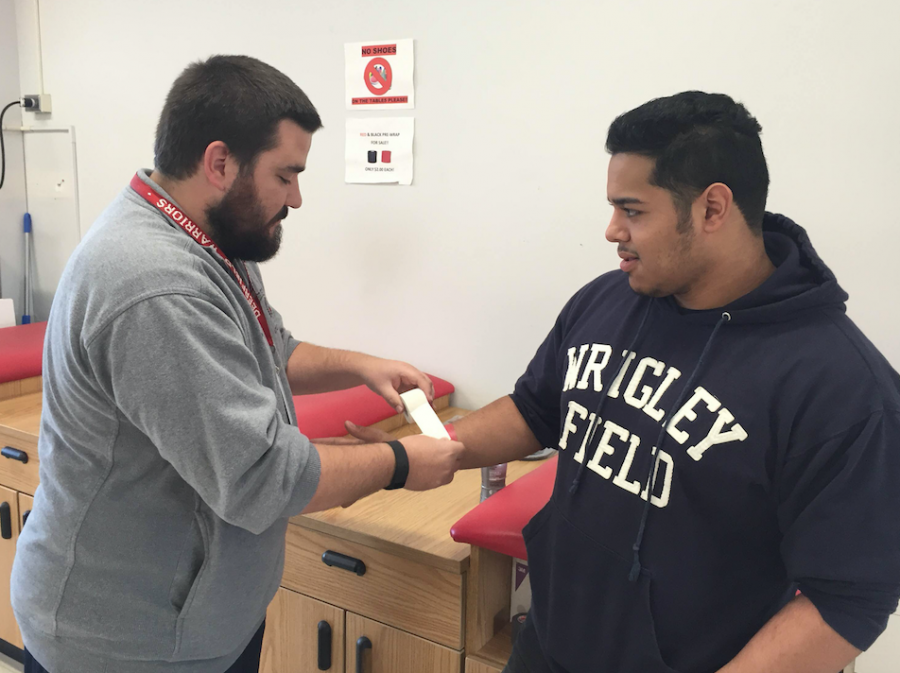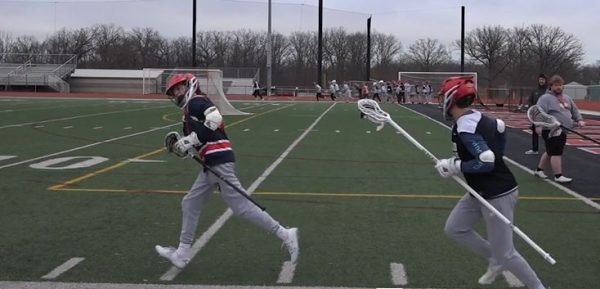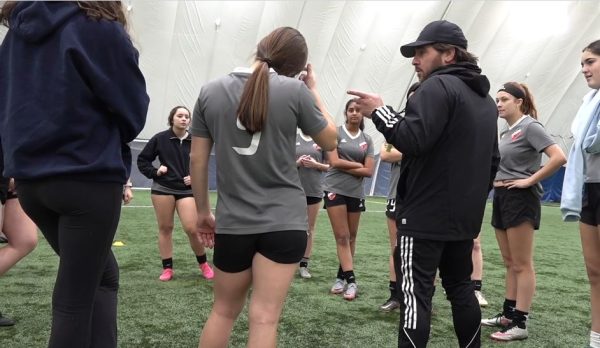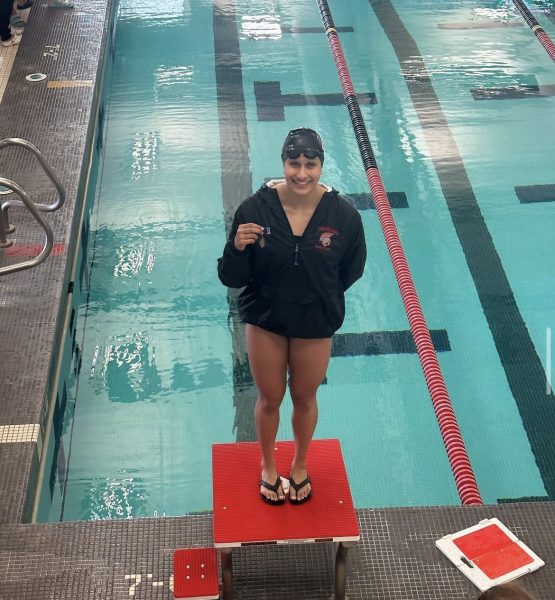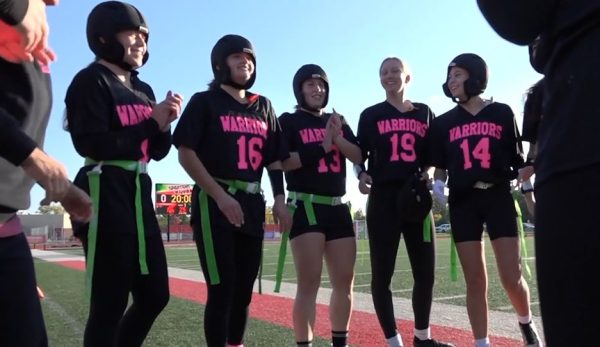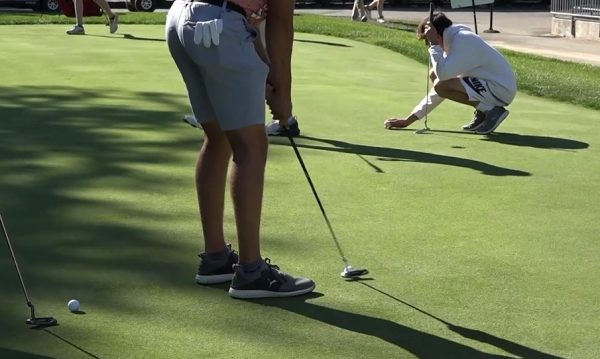Stress Fractures, Torn ACL’s and Broken Wrists! Oh my! The exponential increase in sports injuries at DHS
Walking through the intersection of E and Q hall it’s hard not to see someone in a clunky velcro boot or another student limping to class. After school, the trainers room is jam packed with athletes covered in ice and bandages. The fall sports season has taken a great toll on many DHS athletes, and this increase in injuries parallels a lack of proper prevention tactics used by teams.
While recreational sports have their benefits, they also have the potential to cause lifelong damages. According to USA Today,1.35 million young athletes sustain sports related injuries every year. While many students experience some type of pain, they continue to perform because of parental pressure, guilt of letting down their team or ignorance as to what a serious injury may feel like.
The trainer’s room at DHS is one example of the prevalence of injuries today. Each day, the room is filled to the brim with football players being taped up, cross country runners rolling their hamstrings and wrestlers taking ice baths. The trainers serve an important duty for many students for a myriad of treatments and prevention tactics. Bart Castillo, the assistant trainer at DHS, talks about the spike in injuries that he has seen recently.
“In the last two years we have seen a major increase in injuries. I think some of it is that athletes are playing year round now … Basketball is year round and even baseball players are playing indoors. I think it’s just one of those things, your body needs rest,” Castillo said.
While the hectic crowd of people are flooding through the trainer’s doors, a group of dedicated students in Sports Medicine Club lighten the heavy load that the trainers carry.
With steady hands, the members of the club focus on perfectly pre-wrapping the red bandages around the football player’s wrists or the cross country runners aching knees. Behind it all is Castillo, who provides hands on lessons of how to treat different bruises and bumps and how to care for an athlete in an emergency. This club is for anyone who has an interest in physical therapy, athletic training, or any jobs in the medical field. DHS senior, Amanda Hunt, was first attracted to the club due to its unique premise of hands-on medical training. Throughout the years, Hunt has seen many injuries.
“There are a lot of broken wrists and broken bones … There is different diversity of injuries depending on the season,” Hunt said.
While most injuries are treatable, many athletes are forced to end their seasons prematurely due to stress fractures, torn ACL’s and other serious injuries that need time to heal. Mr Hurtig, the coach of the boys soccer team, has been hands-on with his athletes to prevent this from happening. However, as the list of injuries grows longer, coaches have to work extra hard in order to keep their team from falling victim to injuries.
“I feel like there has been more athletes over the last 5-10 years getting injured than there has been before that… I think that the athletes are training a lot more in terms of weight lifting and conditioning. So the speed of the game is faster which is going to result in injuries,” Hurtig said.
Even though the way athletes train has changed, the mindset of many athletes has not. No player wants to be on the bench watching their peers play. Conversely, the players won’t sit out even if they are hurting. This attitude can be extremely damaging because many injuries are preventable, athletes need to rest.
“A lot of them think they can play through it and it will just go away. Especially the runners who just want to keep running or the kids who don’t want to sit down. Bodies aren’t made for that and the injuries will not go away,” Castillo said.
According to Hurtig, the physicality of sports isn’t the only reason athletes are getting injured. The mental aspect of sports in crucial in understanding why so many players are getting injured. The player’s mentality, even during practice, can affect their performance in ways that may make them at higher risk for injury. Mr. Hurtig firmly believes that without the proper mental preparation, there will be a definite increased rate of injury.
“The risks never outweigh the benefits, but there is finding a balance between playing hard and not thinking about injuries. Once players start playing the game thinking about getting injured, I think that is actually when injuries are most likely to occur. Players need to perform and practice without that being on their mind, and then I’ve always felt that it is much less likely to get an injury,” Mr. Hurtig said.
That overused cliche “about 90% of your performance is mental” may hold more truth than people believe. Most of what athletes and coaches care during practice is physical, and through that they neglect the importance of mental readiness. While a player may have impeccable fitness, their stress and inhibitions may be a major source of their injuries.
“If you aren’t mentally prepared to go back in yet, then you are more of a liability than you are anything else. That mental frame of mind has a serious affect on how your body actually functions. The ones who are coming back from an injury, I worry more about them because they are still tentative and nervous,” Castillo said.
Although there are many factors that contribute to the rise in injury, the coaches and trainers are coming up with new ways to make these shocking statistics go down. In recent years, new innovations have been incorporated into high school level sports to make the game safer for the athletes. Heart guards for baseball, more protective gear for football and exercises made to target and strengthen areas prone to injury. Coaches and trainers are hopeful that having more safety precautions and prevention will stop the increasing rates of injury.
“In girls soccer, there are many knee injuries, so they are lifting and strengthening the thighs and legs around the knee so that they can prevent some of the tears. We have great trainers here that all the athletes should connect with and all the coaches should learn what the best stretches are,” Mr. Hurtig said.

